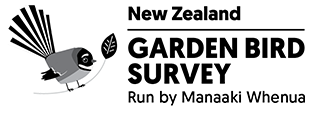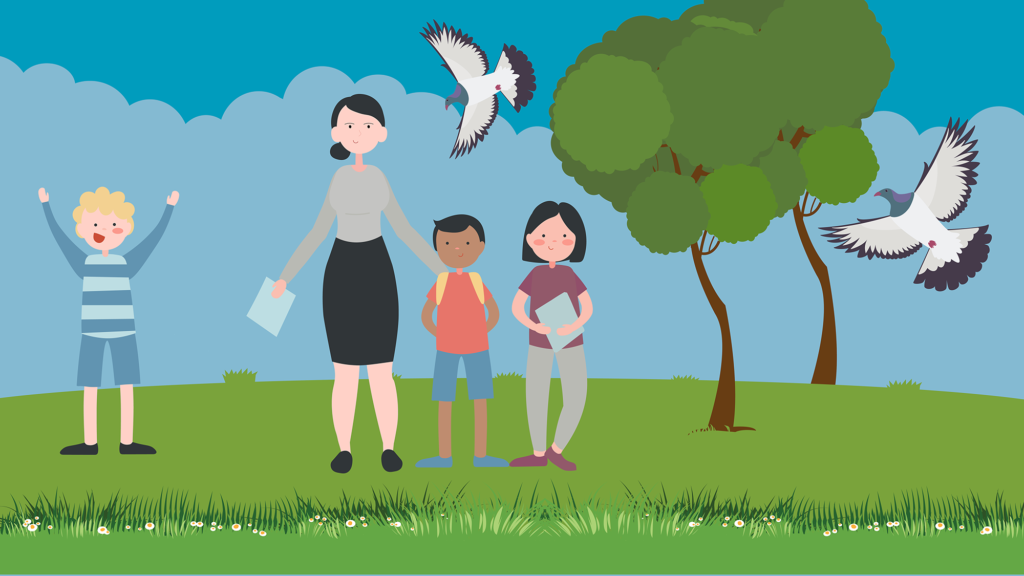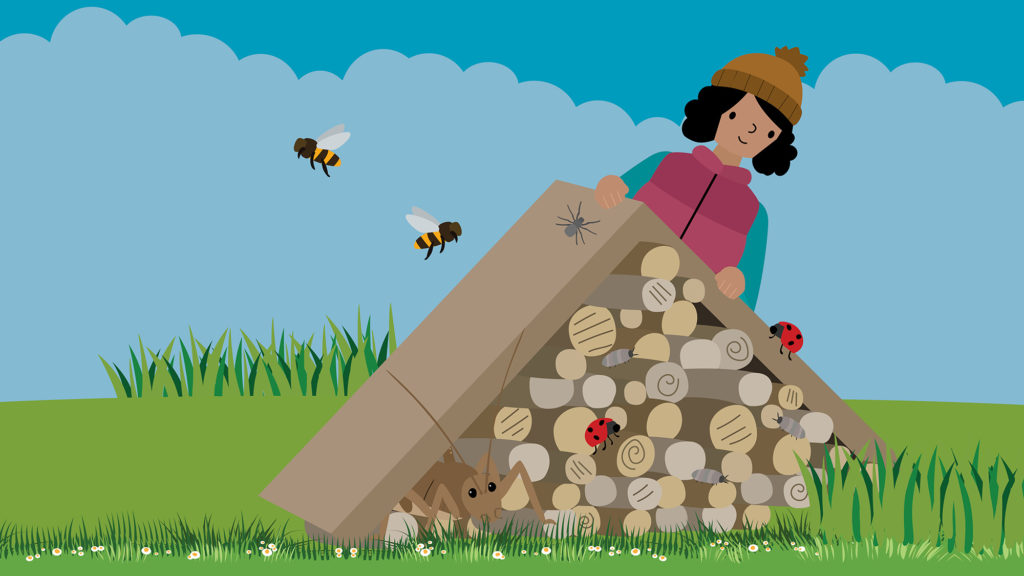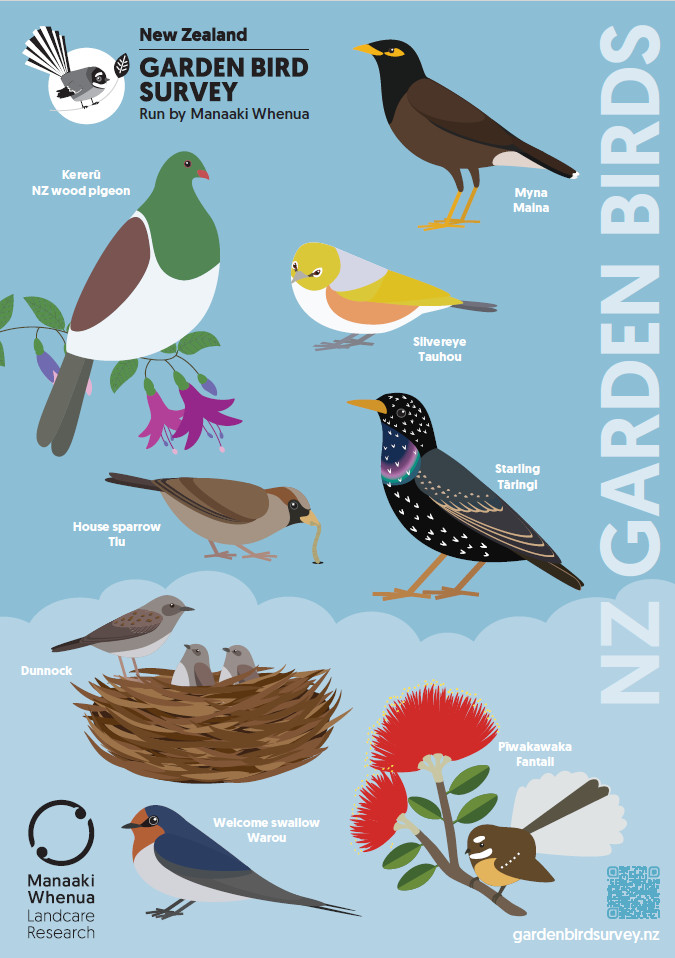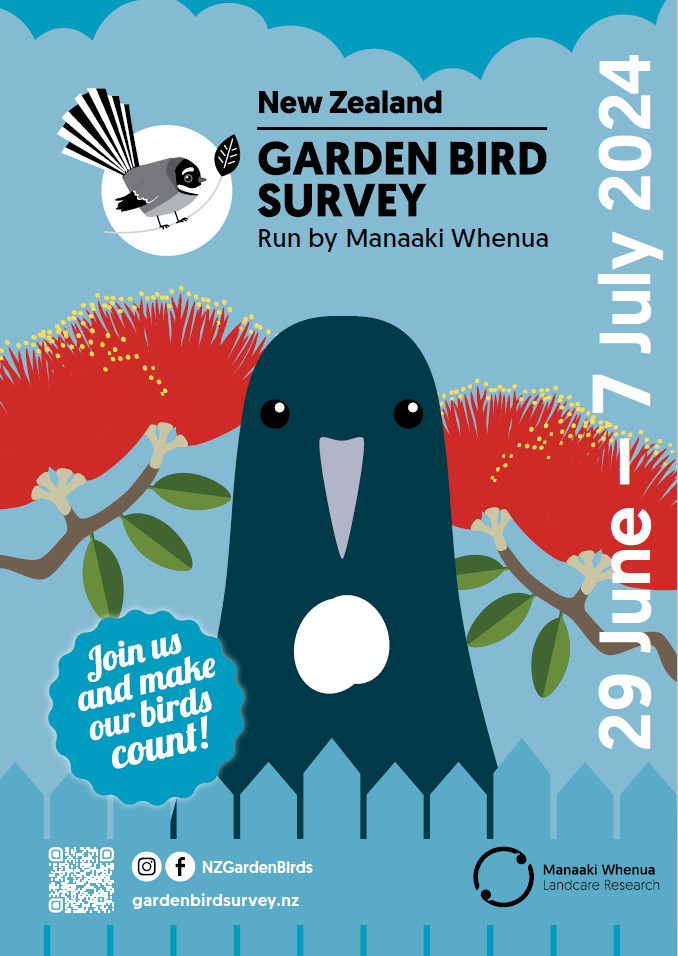The New Zealand Garden Bird Survey | Te Tatauranga o ngā Manu Māra o Aotearoa: Saturday 29 June – Sunday 7 July 2024
Tips for running the NZ Garden Bird Survey in your classroom
The NZ Garden Bird Survey is a simple bird-watching activity that connects tamariki/children with nature and enables them to become citizen scientists for the day. It can be done as a class activity and/or at home.
Why take part?
- Students can enjoy some fresh air and fun!
- It can easily be built into the curriculum (e.g. animal classification, population studies, hypothesis testing, data gathering, data analysis, report writing).
- It introduces the concept and practice of carrying out simple surveys, which are important for scientific inquiry and a basic tool of conservation. (you can’t look after wildlife properly unless you know what’s there and how much of it there is).
- It conveys positive messages about caring for the environment, knowing and protecting what’s there.
- It can be a simple one-off activity or a catalyst for many environmental activities and projects.
- It can contribute to badge work (e.g. Science Badge, Duke of Edinburgh award, Science Fair).
Younger children can be grouped into teams, with each team making observations for a limited amount of time.
Older students should follow standard survey instructions.
Understanding bird sizes and habitats
How big is that bird? The Chocolate Fish Index.
Where do birds feed? Gardens are like layer cakes.
Create a bird-friendly haven in your garden, school, or local park
We all love spending time in our gardens, marvelling at the birds and wildlife we find there. What can you do to enhance your garden to maximise its appeal to birds and make it safe for birdlife?
Find out how »Materials and equipment
- Tally sheet
- Pen or pencil
- A clock, watch, or timer
- A bird identification guide
- Binoculars are helpful but not essential
Resources – Te Reo Māori
Preparation
Before the survey, encourage students to learn to identify the different birds they see at their school, garden, park or marae. Tamariki could also make their own identification guides.
How long will it take?
The survey lasts one hour. If one hour is too long for your class period, it can be split into two half-hour spells, or three 20-minute spells, or four 15-minute spells.
Students can work together in small groups. Different roles within the group can include a bird spotter, bird counter, bird identifier and results recorder.
Where to do the survey
Birds can be counted from inside or outside the classroom. Inside is like being in a bird hide; the birds can’t see you and continue to behave naturally. The students can stand or sit at a desk near a window, perhaps with drink bottles and something to eat, and watch birds through the window.
If outside, they need to be careful not to frighten birds away from where they are watching. They could sit on a bench or chairs. If the school has a bird feeder or water bath, students may like to watch the area of school ground that includes that feature because it is likely to have more birds than elsewhere in the school. Students don’t have to be able to see all of the school grounds, just part of it.
The survey can be done at home, either individually, or with whānau or friends.
What to record
The highest number of each species seen at one time during a one-hour observation period is recorded. For example, students might see blackbirds four times during the hour: first they might see three birds, then two, then three again, and finally just one. In this case, they report three blackbirds because that was the greatest number seen at any one time. They shouldn’t add the numbers up to make a total across the hour.
Where to submit results
Results can be entered from the start of the survey period. You can access the form on this website.
Please note: If students participate as a group (e.g. as part of a school class) they enter only one set of data for the whole group (i.e. one set of data for each one‑hour survey). We don’t want separate entries from 30 children all seeing the same blackbird! However, students may do surveys at more than one location (e.g. at school and at home), in which case they enter results separately for each location.
Thank you for helping make our birds count!
We would love to hear how the survey went for you and your students.
Please contact us directly with feedback and photos, or join the conversation on social media.
Children’s activities
Colouring competition
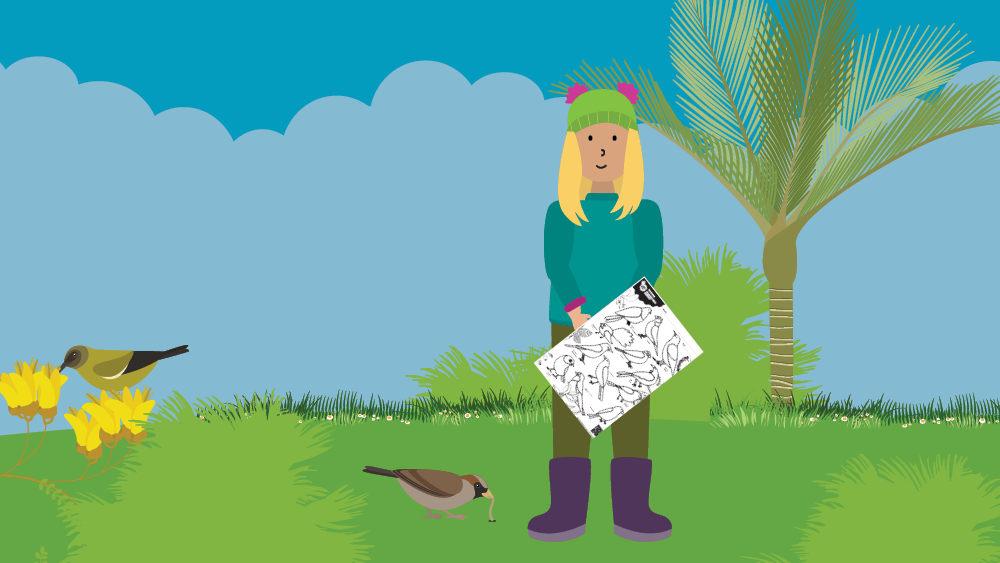
Birdy-licious prizes & art supplies available to the most artistic, creative, or enthusiastic in this year’s competition.
Brilliant bird masks
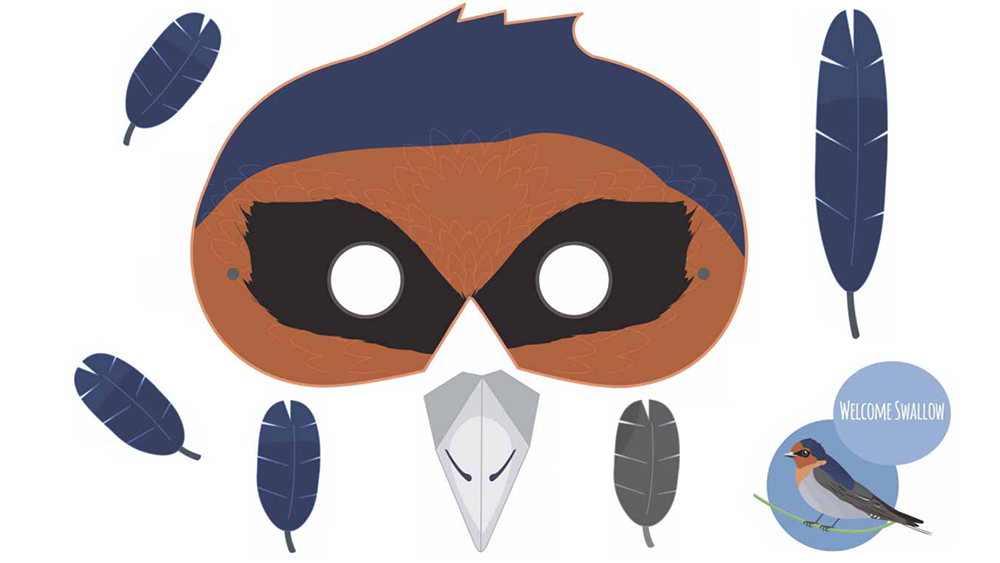
We have some brilliant bird masks – cut yours out, put it on and get social!
Bird colouring sheets
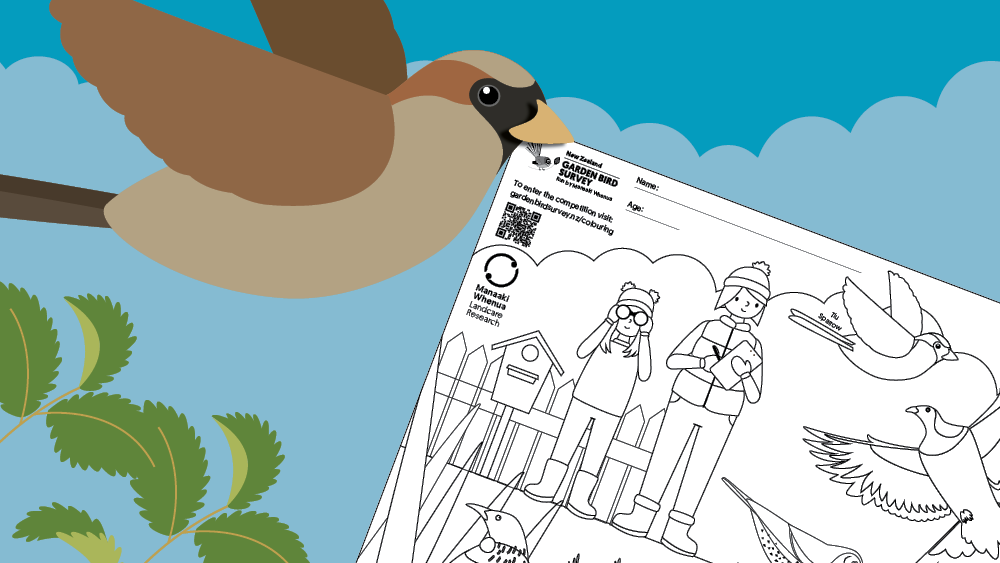
Selection of bird and nature outlines for you to style in your own style
Additional resources
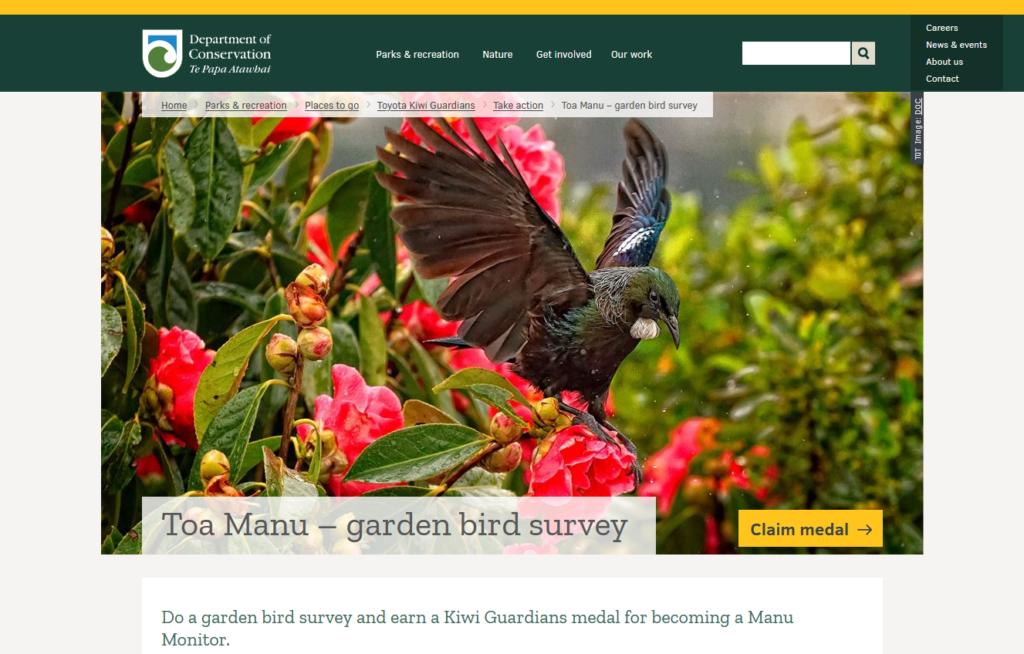
Kiwi Guaridans Toa Manu – garden bird survey
Do a garden bird survey and earn a Kiwi Guardians medal for becoming a Manu Monitor.
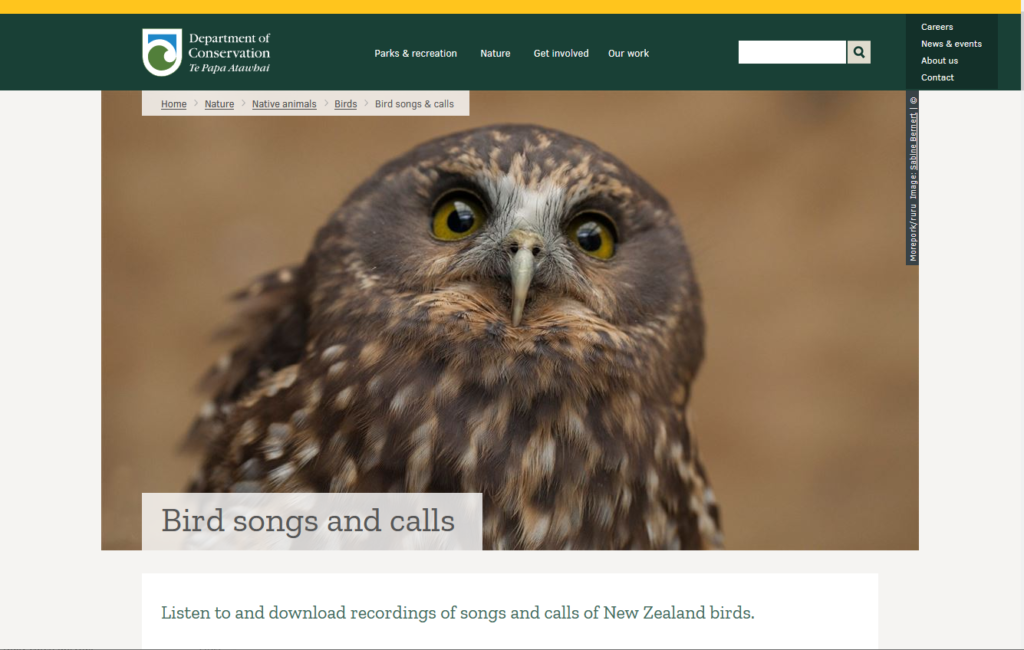
DOC bird songs and calls
Listen to and download recordings of songs and calls of NZ birds.
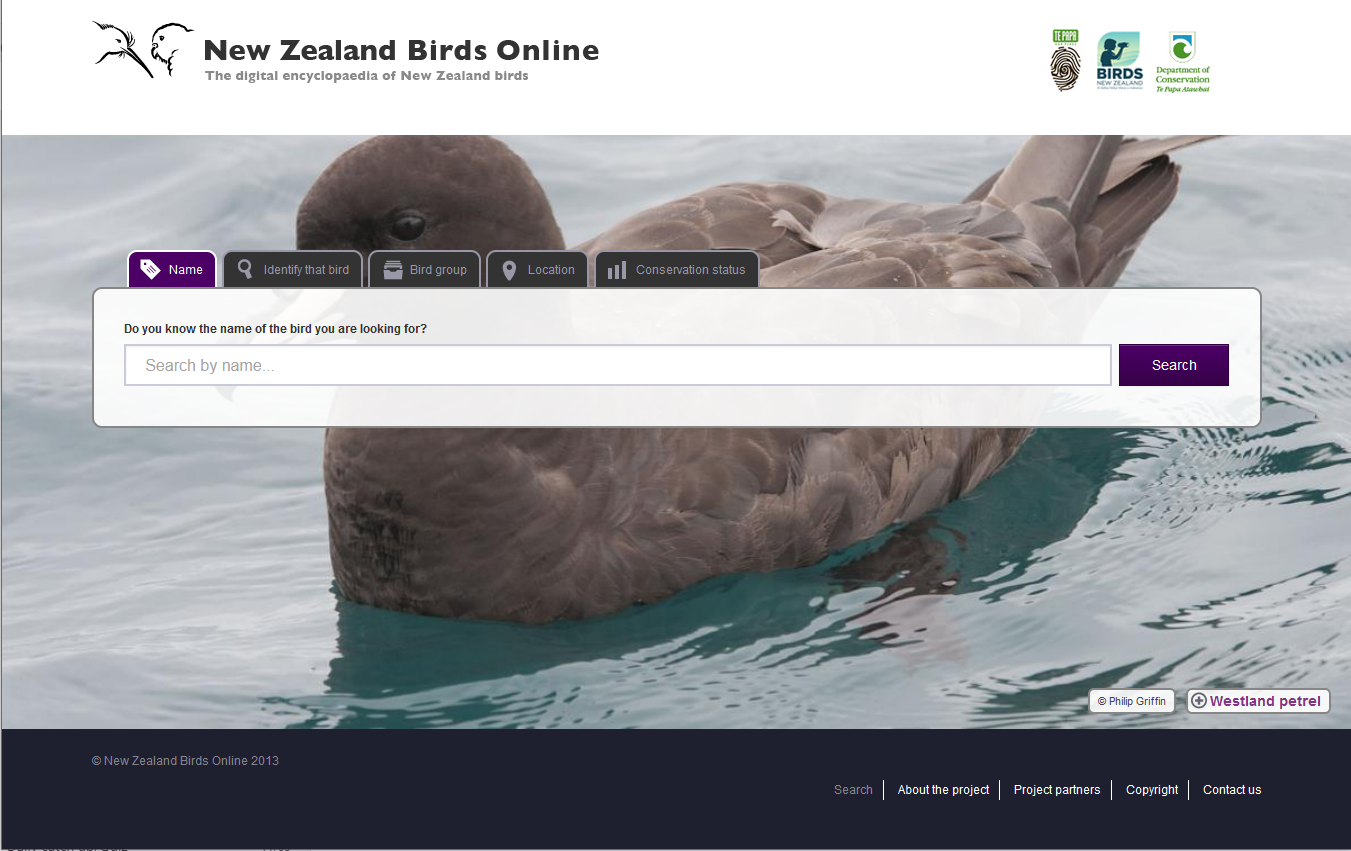
New Zealand Birds Online
The digital encyclopaedia of NZ birds

Te Papa extinct birds blog
Stories from Te Papa’s experts, including curators, scientists, historians, collection managers, and educators.
